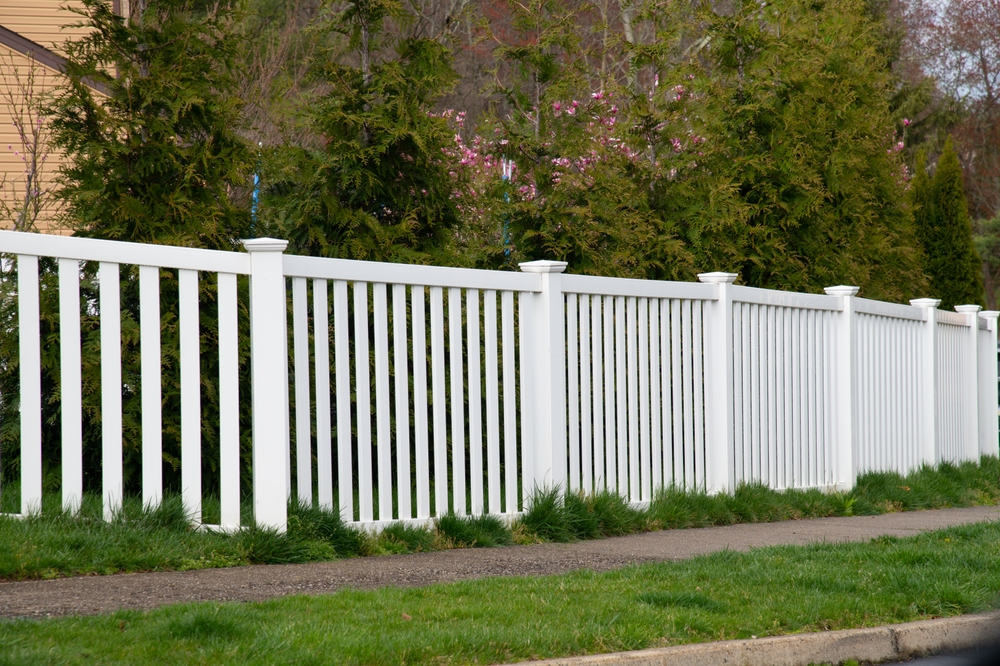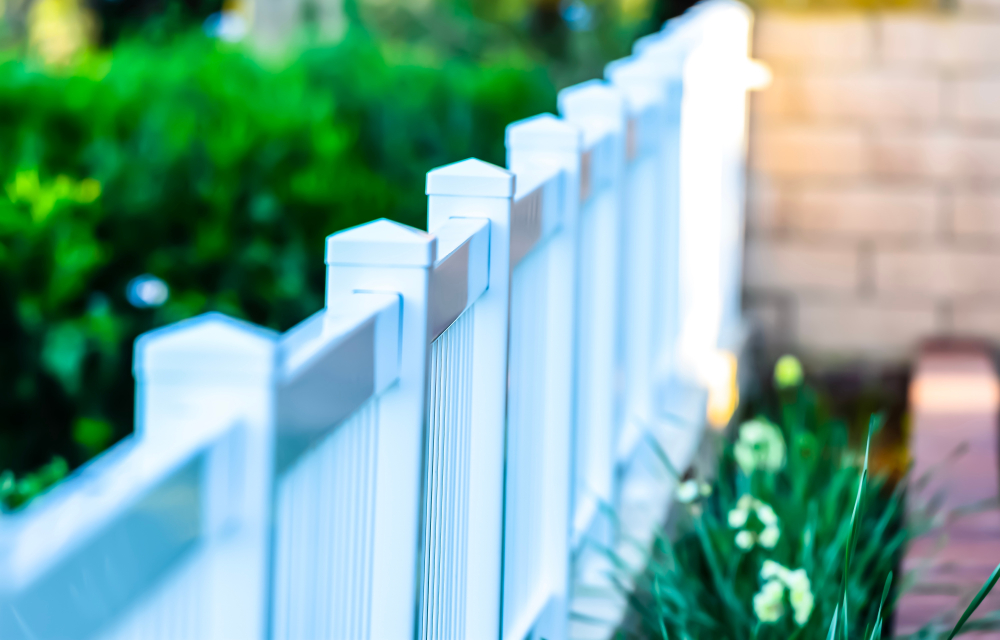White vinyl fencing is generally less likely to turn yellow compared to other colors, but it can still be affected by various factors that may lead to discoloration over time. The primary reason for white vinyl fences turning yellow is exposure to environmental contaminants, such as dirt, pollen, mold, mildew, or algae. Here are some common reasons why white vinyl fencing may turn yellow:
- Environmental Contaminants: Dust, dirt, and airborne particles can settle on the surface of the white vinyl fence and become trapped in its pores. Over time, these contaminants can cause a yellowish or dingy appearance.
- Mold and Mildew: In areas with high humidity or moisture, mold and mildew growth can occur on the surface of the vinyl fence, leading to yellow or greenish discoloration.
- Algae Growth: Algae can thrive on the surface of a vinyl fence, especially in damp and shaded areas. Algae growth can result in a greenish tint.
- Lack of Maintenance: Neglecting regular cleaning and maintenance can allow environmental contaminants and organic matter to accumulate on the fence, contributing to discoloration.
- UV Exposure: While white vinyl is less susceptible to fading from UV exposure compared to darker colors, prolonged exposure to intense sunlight can still have some impact on the fence’s appearance over time.
To prevent or address the yellowing of your white vinyl fence, consider the following measures:
- Regular Cleaning: Clean your white vinyl fence regularly with a mild detergent and water solution to remove dirt and contaminants. Use a soft bristle brush or sponge to gently scrub the surface. Rinse thoroughly with water to prevent residue buildup.
- Mold and Algae Control: If you notice mold, mildew, or algae growth, clean and treat the affected areas with a solution of water and white vinegar or a specialized vinyl fence cleaner. Scrub gently and rinse thoroughly.
- Shade and Shelter: If possible, plant trees or shrubs near the fence to provide shade and reduce moisture, which can help prevent mold and mildew growth.
- Trim Vegetation: Keep vegetation near the fence trimmed to reduce shade and improve air circulation.
- Apply a Vinyl Protectant: Some vinyl protectant products are available that can help shield the fence from UV rays and environmental factors. Follow the manufacturer’s instructions when applying these products.
By practicing regular cleaning and maintenance and addressing issues promptly, you can help keep your white vinyl fence looking clean and prevent yellowing or discoloration over time.




